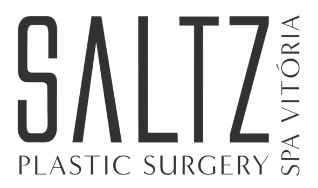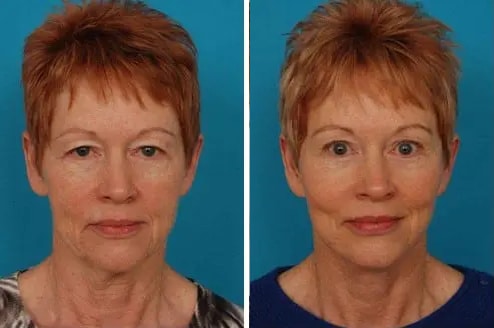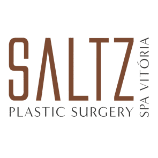Laser Skin Resurfacing

Laser
Skin Resurfacing in Salt Lake City


CO2 Laser skin resurfacing
Laser peels, also called laser skin resurfacing, laser vaporization, and laserbrasion, can help reduce the appearance of facial skin conditions such as blemishes, sun spots, acne scars, uneven skin tone, even warts. They can also help rejuvenate non-responsive skin after a facelift, reduce enlarged pores, and fight liver spots.
Laser peels are very precise and cause little damage to surrounding tissue. They are generally restricted to the face because facial skin heals better than other areas of the body.

CO2 Laser skin resurfacing in Salt Lake City & Park City, UT
Laser peels, also called laser skin resurfacing, laser vaporization, and laserbrasion, can help reduce the appearance of facial skin conditions such as blemishes, sun spots, acne scars, uneven skin tone, even warts. They can also help rejuvenate non-responsive skin after a facelift, reduce enlarged pores, and fight liver spots.
Laser peels are very precise and cause little damage to surrounding tissue. They are generally restricted to the face because facial skin heals better than other areas of the body.

CO2 Laser skin resurfacing in Salt Lake City & Park City, UT
Laser peels, also called laser skin resurfacing, laser vaporization, and laserbrasion, can help reduce the appearance of facial skin conditions such as blemishes, sun spots, acne scars, uneven skin tone, even warts. They can also help rejuvenate non-responsive skin after a facelift, reduce enlarged pores, and fight liver spots.
Laser peels are very precise and cause little damage to surrounding tissue. They are generally restricted to the face because facial skin heals better than other areas of the body.
Laser Skin Treatment FAQ
Women and men seeking a non-invasive procedure to change the look of small imperfections, discolorations, or signs of aging, as well as younger patients looking to reduce their acne, are all ideal candidates for laser peels. Here’s a list of skin flaws and conditions that laser peels can address:
Before your procedure, you will meet with Dr. Saltz, his nurse, and his master aestheticians to evaluate your skin type and to discuss your goals and treatment options. To better prepare your skin for a laser peel, Dr. Saltz may first recommend a series of topical skin treatments.
Laser peels take from one to two hours, depending on the area being treated and the type of laser used. There are two types of laser peel procedures, ablative and non-ablative.
Ablative Laser Peels
Ablative laser peels target the skin’s outer layer (the epidermis) using targeted light wavelengths that are converted into heat energy, vaporizing thin sections of skin. This allows new skin to grow and replace the damaged skin. The results are often quite dramatic.
Ablative laser resurfacing is an aggressive treatment and requires recovery time. Treated areas will become dry and peel after several days. The skin will generally look and feel raw, requiring ointments to be applied for up to four weeks. During this time, the patient must avoid facial soaps and sun exposure, and be diligent about applying prescribed facial ointments. After healing, the skin may continue to appear red for several weeks.
Non-Ablative Laser Resurfacing
Non-ablative laser resurfacing does not damage the outer skin because it targets the underlying dermis layer. Non-ablative lasers stimulate the body to produce new collagen, the structural protein that is responsible for supporting the skin. The procedures don’t require anesthesia and don’t need recovery time. Because they are not as aggressive as ablative laser peels in addressing your condition, more than one treatment is required.
Dr. Saltz and his team will consult with you on an individual basis to determine which laser peel best fits your needs.
To learn more about laser skin treatments visit our blog.
Laser Skin Treatment FAQ
Women and men seeking a non-invasive procedure to change the look of small imperfections, discolorations, or signs of aging, as well as younger patients looking to reduce their acne, are all ideal candidates for laser peels. Here’s a list of skin flaws and conditions that laser peels can address:
Before your procedure, you will meet with Dr. Saltz, his nurse, and his master aestheticians to evaluate your skin type and to discuss your goals and treatment options. To better prepare your skin for a laser peel, Dr. Saltz may first recommend a series of topical skin treatments.
Laser peels take from one to two hours, depending on the area being treated and the type of laser used. There are two types of laser peel procedures, ablative and non-ablative.
Ablative Laser Peels
Ablative laser peels target the skin’s outer layer (the epidermis) using targeted light wavelengths that are converted into heat energy, vaporizing thin sections of skin. This allows new skin to grow and replace the damaged skin. The results are often quite dramatic.
Ablative laser resurfacing is an aggressive treatment and requires recovery time. Treated areas will become dry and peel after several days. The skin will generally look and feel raw, requiring ointments to be applied for up to four weeks. During this time, the patient must avoid facial soaps and sun exposure, and be diligent about applying prescribed facial ointments. After healing, the skin may continue to appear red for several weeks.
Non-Ablative Laser Resurfacing
Non-ablative laser resurfacing does not damage the outer skin because it targets the underlying dermis layer. Non-ablative lasers stimulate the body to produce new collagen, the structural protein that is responsible for supporting the skin. The procedures don’t require anesthesia and don’t need recovery time. Because they are not as aggressive as ablative laser peels in addressing your condition, more than one treatment is required.
Dr. Saltz and his team will consult with you on an individual basis to determine which laser peel best fits your needs.
To learn more about laser skin treatments visit our blog.
Laser skin resurfacing has historically been known as a treatment that "vaporizes" the uppermost layers of the skin. This isn't incorrect, and when the upper layers of the skin are wiped away, you can expect to see some changes immediately after your procedure. That said, those changes don't equate to the cosmetic results people are referring to when they ask this question.
To understand when you can expect to see the results of your Laser Peel, it's important to know what's happening behind the scenes.
Laser peels instigate the process of neocollagenesis. This is the activation of the specialized fibroblast cells; the cells that produce collagen and elastin. The collagen and elastin fibers in your skin provide the structure for the extracellular matrix, which acts as the scaffolding for all bodily tissues.
As we age, this structure is continually degrading. As a result, we lose the firm, stretchy skin we once had. Neocollagenesis doesn't occur without creating a wound. Laser peels create the precise degree of controlled injury that's needed to bring about new collagen and elastin synthesis.
In general, it takes the body about 12 weeks to produce new collagen and complete the collagen remodeling process. This may sound like a significant amount of time when you're waiting to see the full effects of a cosmetic treatment. However, it's quite short in comparison to the years it takes for collagen to degrade enough for the signs of aging to develop.
The good news is that, during those 12 weeks, you'll see ever-more-present signs of tissue regeneration that is happening below the surface. Your skin may look more radiant. Your pores may look smaller and less pronounced. Your skin may be softer to the touch, and its tone may be improving day by day.
One of the simplest ways to discuss the efficacy and safety of laser treatments on various skin types is through observation of the Fitzpatrick scale. This scale has been widely used since the mid-1970s, and it can help you broach the topic of treatment options with a skilled provider.
The Fitzpatrick Skin Type Characteristics are outlined as follows:
- Type I characteristics include white skin, blonde hair, and blue or green eyes. This skin type often burns easily and may have freckles.
- Type II characteristics include white skin, blonde hair, and green or blue eyes. Freckles are present and you burn easily. It's difficult for this skin type to tan.
- Type III characteristics include white skin and blonde or brown hair. Your eyes are blue or brown. You may tan, but you'll first burn, and you may have freckles.
- Type IV characteristics include brown skin, hair, and eyes. You tan relatively easily and rarely burn. Freckles are rare.
- Type V characteristics include dark brown skin, brown eyes, and dark brown or black hair. Sunburn is very unlikely, but tanning is easy. Freckles are rare.
- Type VI characteristics include black skin and hair and brown eyes. Tanning occurs but sunburn and freckles do not.
You don't have to know exactly where you fall on the Fitzpatrick scale to begin exploring your aesthetic treatment options.
Dr. Saltz and our skilled team understand how the different skin types respond to light. They know which skin types may quickly overheat, and they know how to address this response with specific precautions.
Thanks to advances in laser technology and our options for using nonablative laser devices, a laser peel may be suitable for a wide range of skin types.
Laser skin resurfacing has historically been known as a treatment that "vaporizes" the uppermost layers of the skin. This isn't incorrect, and when the upper layers of the skin are wiped away, you can expect to see some changes immediately after your procedure. That said, those changes don't equate to the cosmetic results people are referring to when they ask this question.
To understand when you can expect to see the results of your Laser Peel, it's important to know what's happening behind the scenes.
Laser peels instigate the process of neocollagenesis. This is the activation of the specialized fibroblast cells; the cells that produce collagen and elastin. The collagen and elastin fibers in your skin provide the structure for the extracellular matrix, which acts as the scaffolding for all bodily tissues.
As we age, this structure is continually degrading. As a result, we lose the firm, stretchy skin we once had. Neocollagenesis doesn't occur without creating a wound. Laser peels create the precise degree of controlled injury that's needed to bring about new collagen and elastin synthesis.
In general, it takes the body about 12 weeks to produce new collagen and complete the collagen remodeling process. This may sound like a significant amount of time when you're waiting to see the full effects of a cosmetic treatment. However, it's quite short in comparison to the years it takes for collagen to degrade enough for the signs of aging to develop.
The good news is that, during those 12 weeks, you'll see ever-more-present signs of tissue regeneration that is happening below the surface. Your skin may look more radiant. Your pores may look smaller and less pronounced. Your skin may be softer to the touch, and its tone may be improving day by day.
One of the simplest ways to discuss the efficacy and safety of laser treatments on various skin types is through observation of the Fitzpatrick scale. This scale has been widely used since the mid-1970s, and it can help you broach the topic of treatment options with a skilled provider.
The Fitzpatrick Skin Type Characteristics are outlined as follows:
- Type I characteristics include white skin, blonde hair, and blue or green eyes. This skin type often burns easily and may have freckles.
- Type II characteristics include white skin, blonde hair, and green or blue eyes. Freckles are present and you burn easily. It's difficult for this skin type to tan.
- Type III characteristics include white skin and blonde or brown hair. Your eyes are blue or brown. You may tan, but you'll first burn, and you may have freckles.
- Type IV characteristics include brown skin, hair, and eyes. You tan relatively easily and rarely burn. Freckles are rare.
- Type V characteristics include dark brown skin, brown eyes, and dark brown or black hair. Sunburn is very unlikely, but tanning is easy. Freckles are rare.
- Type VI characteristics include black skin and hair and brown eyes. Tanning occurs but sunburn and freckles do not.
You don't have to know exactly where you fall on the Fitzpatrick scale to begin exploring your aesthetic treatment options.
Dr. Saltz and our skilled team understand how the different skin types respond to light. They know which skin types may quickly overheat, and they know how to address this response with specific precautions.
Thanks to advances in laser technology and our options for using nonablative laser devices, a laser peel may be suitable for a wide range of skin types.
Ablative and non-ablative CO2 lasers target different skin concerns, and depending on your skin goals, Dr. Saltz is happy to adjust between lasers to benefit your skin best. The main difference between these two lasers is that ablative lasers focus on removing the top layer of skin, while non-ablative lasers use heat technology to encourage collagen production without removing or harming any layer of your skin at all.
Ablative lasers are best used to treat deeper skin concerts that go below the skin’s surface, such as facial wrinkles, pigmentation, and uneven skin texture. While this treatment comes with a longer recovery time, the results also last longer.
Non-ablative lasers focus on treating melasma, rosacea, scarring, sun damage, and other skin conditions whose appearance can be eliminated through the application of heat. Non-ablative laser treatments come with a lower risk of complications and are great for patients who prefer a very minimally invasive procedure.
A patient may undergo both a facelift procedure and a CO2 laser skin resurfacing treatment, but not simultaneously. CO2 laser skin resurfacing treatment will provide the best benefits if it can be performed on fully healed skin, especially if collagen production plays a major role in achieving your skin goals. If you have had a facelift procedure, we recommend waiting until after your facelift has fully healed before undergoing any type of laser treatment.
CO2 laser skin resurfacing uses light energy to eliminate facial imperfections or remove the skin’s outermost layer to improve the complexion. While a chemical peel also works to remove layers of the skin for complexion improvement, it uses an applied chemical solution, rather than heat or light technology, to achieve a more radiant facial appearance.
This treatment typically requires three to seven days of downtime. During this time, your skin will experience redness, rawness, swelling, peeling, crusting, itching, or blistering. All these side effects are normal and should disappear on their own after one week. Some patients may notice redness that can stay for up to two weeks, which is also normal while your skin is healing and increasing collagen production.
Ready To Get Started?
We combine preoperative treatment, surgery, and postoperative care for a comprehensive, holistic treatment for all patients. Call today for more information about Laser Skin Resurfacing Salt Lake City & Park City or to schedule your consultation
435.655.6612 or 801.274.9500.
Ready To Get Started?
We combine preoperative treatment, surgery, and postoperative care for a comprehensive, holistic treatment for all patients. Call today for more information about Laser Skin Resurfacing Salt Lake City & Park City or to schedule your consultation
435.655.6612 or 801.274.9500.




